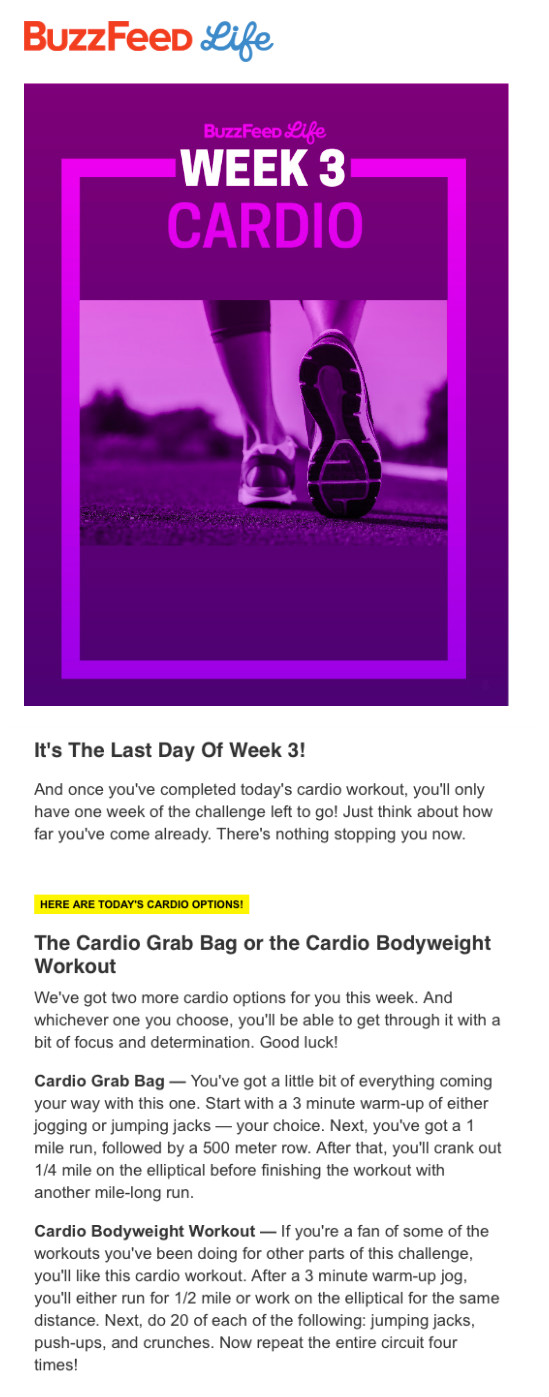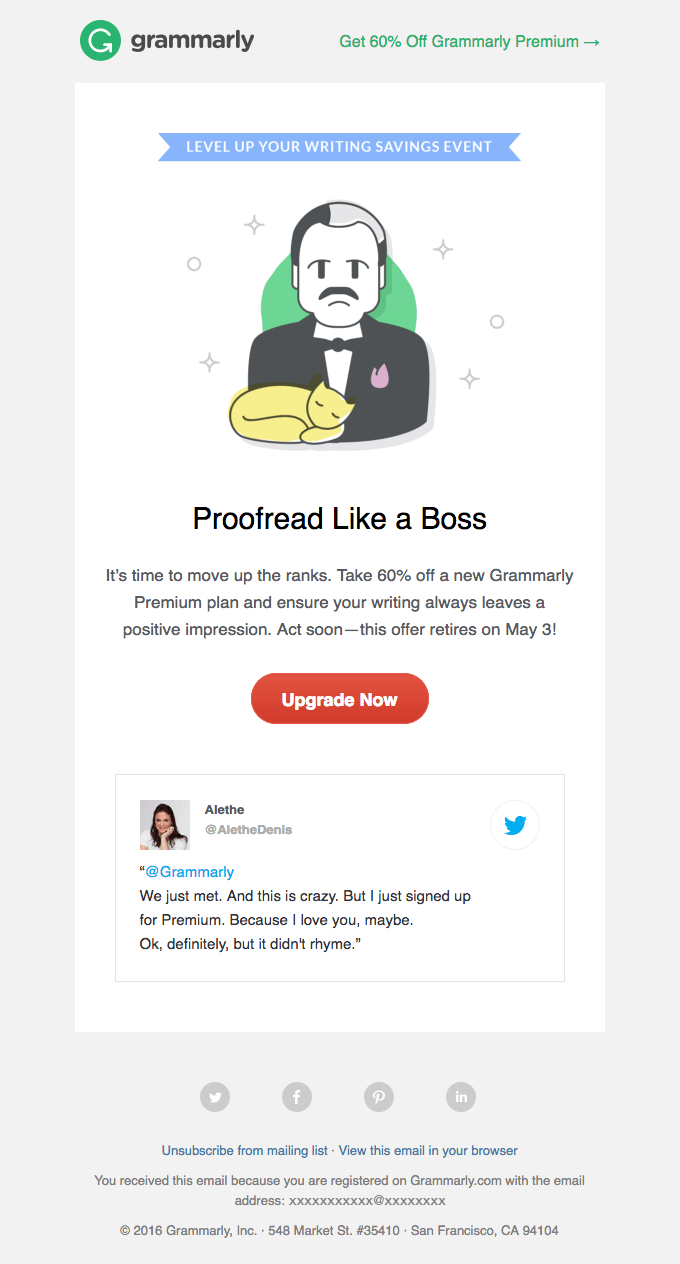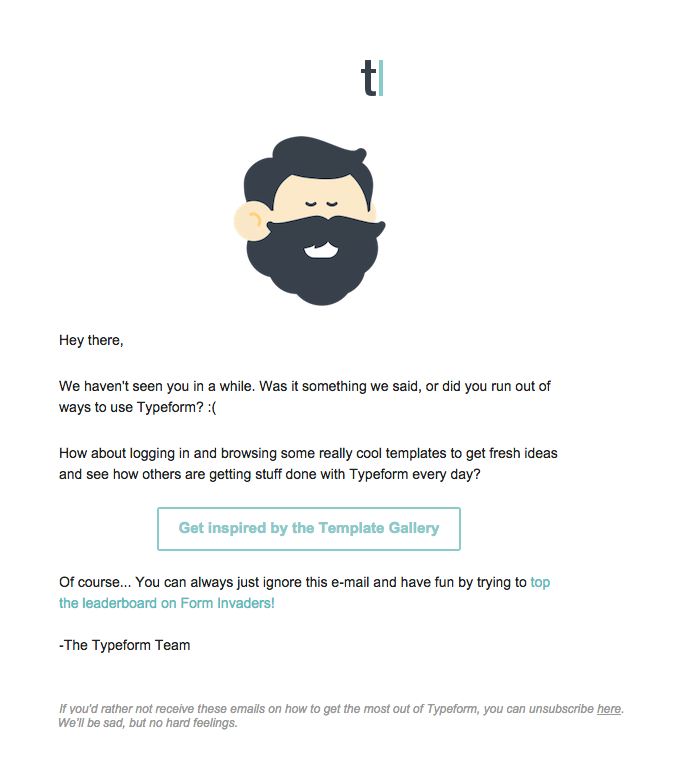Are you looking for a way to nurture leads, communicate regularly with your customers, increase sales or re-engage lost customers?
If any of these common goals are on your to-do list, email drip campaigns could be your solution.
What are drip campaigns?
Simple put, drip campaigns are a series of emails that are sent out on a schedule. They’re also called automated email campaigns, lifecycle emails and autoresponders. Whatever you call it, it all means the same – you create a “package of emails” that are sent at strategic times to accomplish a specific goal.
For instance, you might create a drip campaign that nurtures new contacts. The first email, which is scheduled to arrive within hours of the contact signing up for your email list, is a welcome email. The second email is scheduled for a day later, and showcases the benefits of your signature service. The third email, which is only sent to those that opened the second email, offers a promotional deal on your service.
Drip campaigns run on automation. You create the emails in advance and then use an automated system to send them out when you want.
Sounds effective, right? But do drip campaigns actually work? Take a look at these statistics.
10 statistics that show the success of drip campaigns
Creating and automating emails does take more work than sending a few promotional emails a few times a month, so it’s natural to wonder about the success rates of drip campaigns.
To show how effective this email marketing concept is, here are ten statistics to consider:
- Open rates for drip campaigns are about 80 percent higher than single send emails, and average click-through rates are three times higher.
- Lead nurturing emails get 4-10 times the response rates compared to mass email blasts.
- Drip campaigns can generate 50 percent more sales-ready leads through steady communication with customers.
- Companies that excel at drip campaigns generate 80 percent more sales at 33 percent lower costs.
- Companies have seen a 20 percent increase in sales after using drip campaigns to nurture leads.
- Businesses that use marketing automation to nurture prospects experience a 451 percent increase in qualified leads.
- Nurtured leads make 47 percent larger purchases than non-nurtured leads.
- Relevant emails sent through drip campaigns drive 18 times more revenue than generic emails.
- Businesses that nurture their leads experience a 45 percent increase in lead generation ROI when compared to businesses that don’t.
- Companies that automate the lead nurturing process through marketing platforms like email see at least a 10 percent increase in revenue in 6-9 months.
Examples of drip campaigns
The statistics have likely piqued your interest, so now the question is: how do you implement drip campaigns into your email marketing? The best way to explore the use of drip campaigns is to look at real life examples, and see how other businesses are using them.
Here’s a look at three examples that you can learn from:
1. Email courses
A growing number of businesses are engaging their customers through drip campaigns that are mini courses. For instance, a six-week course on growing your Instagram audience, or a three-week Italian cooking class.
These personalized courses put your product or service in front of highly engaged customers. As you know, personalization is key. Personalized emails deliver six times higher transaction rates, so sending tailored content like this can be a huge win for your business.
Here’s an example of a six-week cardio challenge sent out by BuzzFeed Life.
Aspects to use for inspiration:
- Digestible information
Each class should provide “bite-sized” information. Remember, it’s an email, so you don’t want to go overboard with the text. Provide just enough to complete one lesson.
- Create a look
Make sure each email in the series has a similar look. Use a color scheme that represents your brand, and make sure your business name and logo are present.
2. Lead nurturing series
One of the main objectives of email marketing is often to boost sales. You can use drip campaigns to nurture leads and convert prospective customers into actual customers.
Lead nurturing campaigns are going to differ by company. With a strong understanding of your customers and its sales funnel, you can create a series of emails that walk a new customer through the buying process.
Research shows that it takes 7-13 “touches,” or interactions with a potential customer, to make a sale. If each email you send is a “touch” than you’ll need to create a series of emails that provide key pieces of information to potential customers at the right time.
These drip campaigns often include an introduction email, which welcomes the potential customer to your email family. That’s usually followed by several educational emails that are designed to answer common questions about your product. An email that differentiates your product from competitors might come next, and the final email could be a promotional offer to close the sale.
Here’s an example of an email that could be part of a lead nurturing campaign for Grammarly, an online service that helps users spot writing mistakes. It would be sent at the end of the campaign to get customers to go from a free account to a paid account.
Aspects to use as inspiration:
- Personalization
Notice the email makes a reference to “moving up the ranks,” which shows that the recipient of this email is familiar with their services and is a good candidate to upgrade.
- Offer an incentive
One of the best ways to close a deal is to dangle a carrot. It’s not a new marketing tactic, but it works, even in email marketing. This email offers 60 percent off, which is the kind of substantial savings that new customers could jump at.
3. Re-engagement campaign
It’s important for all businesses to attract and retain customers, but did you know that attracting new customers is actually more expensive? Research shows it’s seven times more expensive to attract a new customer than it is to retain an existing one.
Given that information, it’s worth your while to create a drip campaign to re-engage customers that have strayed from the pack.
Take a look at your contact list and pull out any email address that’s inactive. Now, create a drip campaign that’s designed to bring them back into your sales fold.
You might start with an email that says, “We Miss You,” and provide an incentive to make a purchase.
Those that open the email but don’t make a purchase could receive a “last chance” email that offers a slightly bigger incentive.
Those that don’t respond might receive an email that asks if they’d like to be taken off your list. Give them a link to your preference center so they can opt out if they’d like. It’s better to remove these contacts from your list and spend energy on those that are interested in your brand.
Here’s an example of an email within a re-engagement campaign:
Aspects to use as inspiration:
- Entertaining intro
Use a little humor to entice your customers to come back. Humor is a great way to connect, so don’t be afraid to tap into your comedic side.
- A way to re-engage
The point of the campaign is to bring customers back, so make sure that each email has a clear call to action button that subscribers can’t miss.
Setting up drip campaigns with Pinpointe
Ready to create a drip campaign for your business? Pinpointe users already have the tools necessary to do so at their fingertips.
You have a lot of options when it comes to automating these emails. You can set up “triggers” that send your messages out when you want. A trigger can be a certain date, or a customer’s behavior. For instance, if a customer opens the first email in your drip campaign, that action can trigger the next email to send one day later.
If you take the time to plan the campaign, segment your audience, create the content and set up triggers to ensure the emails are sent, you can almost “set it and forget it.” In other words, doing work upfront means your email marketing machine does the work for you.
Of course, you should check on your campaigns from time to time, and keep an eye on your metrics to see how they’re doing.
Ready to get started? Check out these step-by-step instructions to get your drip campaigns created and automated with Pinpointe.









